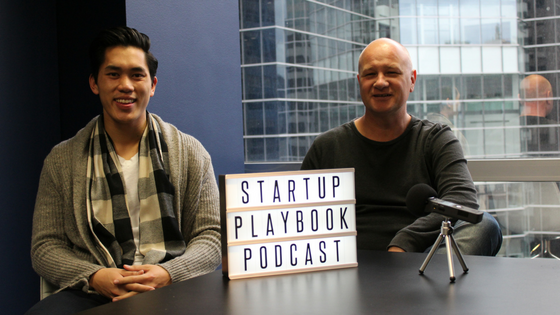One of the common issues that early-stage startups face is the lack of credibility within their industry and their reach to new users with limited marketing budgets.
Getting an influencer, celebrity or a large organisation to invest, partner or promote your startup can greatly increase and scale your traction and provide social proof and credibility to your business.
But getting these large companies or celebrities to buy in to your product can be a difficult process in itself.
I recently sat down for a podcast interview with four successful founders who were able to partner with celebrities, organisations and influencers to help leverage their business.
Tim Mundy (Director of HR Branding Agency – Digital Affair), managed to get a partnership with LinkedIn on the first day of launching their business, Alex McBride (Founder of the Fifth Watches) leveraged on the power of influencers to grow a social media following of over 500,000 followers across their social media accounts and Matthew Snowden and James Nguyen partnered with Apple, the BBC and Stephen Fry to launch an app that went number one in 22 countries and had over half a million downloads.
In the interviews, these founders shared the process they used to find and on board
these partner.
The following is a (simplified) breakdown of that process:
STEP 1: CREATE A LIST
A lot of founders get hung up on getting one particular company, celebrity or influencer to support their product. Sometimes it can take months to go through that process, so it is important to make sure you have several influencers that you are talking to at once.
If one comes on board earlier on, you can leverage of the social proof to land the bigger influencer or company you want to partner with.
STEP 2: BRAND CONGRUENCY
Although you want to make sure you keep your options open, you don’t want to dilute your brand and, on the flip side, an influencer would not want to partner with someone who doesn’t fit their brand or demographic.
In his interview, Alex from The Fifth Watches mentioned that he looked for engagement and authenticity of bloggers and social media influencers to partner up with rather than their number of followers.
This allowed him to grow stronger ties with these influencers as they continued to grow and meant that any exposure they got from influencers was also to a more engaged audience that fit into the product they were trying to sell.
STEP 3: MAKE CONTACT
Once you have a list of companies, influencers or celebrities that you share brand congruency with, the next step will be to make contact with these individuals or organisations.
You can contact individuals in an organisation through channels such as LinkedIn and as Matt and James mention in their podcast interview, there are numerous celebrity and influencer databases that you can purchase online.
A more effective way of getting in front of these people is to make use of connectors –
individuals who can connect you on to the specific person or organisation through a warm lead.
The more well known the organisation or celebrity, the more connectors you may have to go through before getting in front of the person you want to reach out to.
STEP 4: ADD VALUE
A common occurrence that happens when most people get in front of the influencer, organisation, or decision-maker they want to reach is that they go straight into their ask and what they will get out of the relationship.
Once you have established contact, you want to demonstrate value to the person in front of them.
A commonality between Tim, Alex, James and Matt was that once they got in front of these people, their initial focus was to provide value to the people in front of them rather than going to the sell.
Tim was very vocal in promoting LinkedIn in Australia (when they were still relatively new in the space), helping individuals and companies that he worked with in the region get better at their use of the LinkedIn product. Offering this value at no cost to LinkedIn built such a strong connection between Tim and the company, that LinkedIn now promotes his business, to potential clients through speaking opportunities and introductions.
As with anything, developing these partnerships takes time. All of these founders focused on building strong relationships and adding value up front, which has allowed them to develop strong partnerships to grow their business.
Aside from talking about influencers and partnerships, I cover much more in the interviews with these entrepreneurs.
You can listen to the full interviews with these founders on
iTunes,
Stitcher or at
startupplaybook.co.
*Note: this post was originally published on
StartupSmart

see this гидра сайт
Интересный пост
_________________
игровые автоматы book of ra играть на деньги
you could check here empire market link
важный веб ресурс
https://sexreliz.net/fetish/
view publisher site Empire Darknet Markets
алкоголь лечение алкоголизма – лечение больных наркоманией, центр кодирования от алкоголизма
аккаунты яндекс директ купить – купоны яндекс директ втб, купоны гугл адвордс 2020 купить
websites darknet markets
курсы максимум егэ – репетитор по русскому языку спб, репетитор по обществознанию
browse this site https://hydramirror2020.com